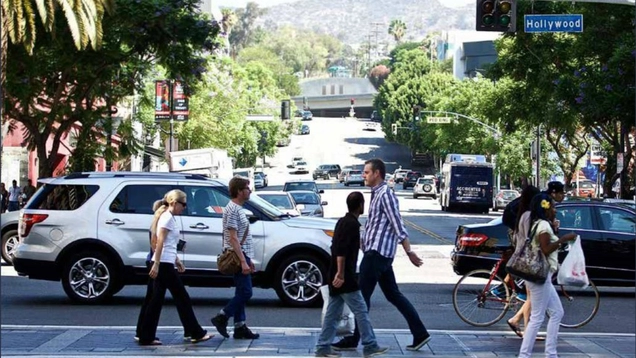
This week, the LA Department of Transportation announced its Vision Zero Action Plan to reduce traffic related fatalities to zero by 2025.
Every day, millions of Angelenos share the road as they make their way around the city. According to the LA Department of Transportation, an Angeleno loses their life in a traffic collision every 40 minutes. This alarming fact is completely unacceptable and the city is working proactively to reserve the trend. Whether you get around by car, bike, bus, train or on foot, it is our city's goal and a top priority for me to ensure that all Angelenos can get wherever they need to go safely.
In 2015, LADOT launched Vision Zero to address LA's considerable traffic safety needs. With so many moving parts, a year-long analysis set out to identify proven methods and solutions to decrease traffic deaths by designing and operating a road system that accounts for human error.
The analysis examined five years of data and found that children, seniors, and people who walk and ride bikes are at the greatest risk for collisions that result in death and serious injury. In addition, the city discovered that a disproportionate number of collisions in Los Angeles take place on a relatively small number of streets, dubbed the High-Injury Network. A total of 65 percent of all severe and fatal collisions involving people walking and biking happen on these streets, which comprise just six percent of the city's roadways. Prioritizing projects that protect these ares is a logical first step toward reaching our goal.
Vision Zero Action Plan
The result of the Vision Zero analysis is the new Vision Zero Action Plan, which is anchored on the principles of engineering, education, enforcement and evaluation as essential to a creating a safe system where human life is the utmost important priority. As a result, the plan focuses on creating safe streets for all, developing a culture of safety, adopting new policy and legislation to improve safety, and responding to relevant data to update community traffic plans.
For example, the LADOT will invest $2 million on an education campaign in 2017, including creative development, on-the-ground community-based outreach, as well as a paid media. The LAPD has also partnered with LADOT to increase a focus on speed enforcement on the Vision Zero High-Injury Network. LADOT has also started the necessary analysis and outreach for engineering design improvements along 15 of the priority corridors, and will implement engineering treatments on all 40 by the end of the year. Focusing efforts on these priority corridors will achieve the 2017 goal of reducing fatalities by 20 percent.
The action plan provides us with the strategies we need to make improvements that will save lives across the city.
To read about the Vision Zero Action Plan visit visionzero.lacity.org
If you have comments about the plan, please contact me: [email protected].